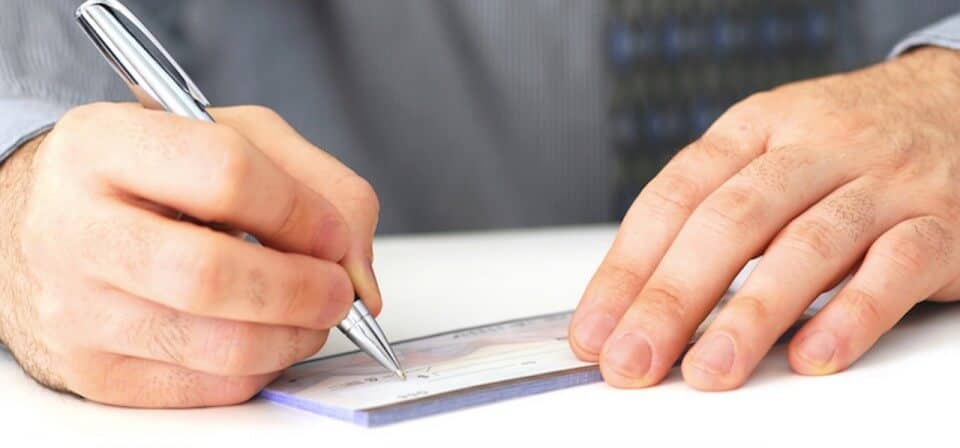Since the UAE decriminalized bounced cheques, anyone who held a cheque that was returned or dishonored can now bring the issue directly to an execution judge in a UAE court in order to claim the money owed to them.
According to Federal Law No. 14 of 2020 Amending Certain Provisions of the Federal Law No. (18) of 1993 Concerning the Commercial Transaction Law, cheque beneficiaries or bearers do not have to file criminal or civil charges for nonpayment of cheques. To have the cheque’s value or the remaining amount paid, they can directly approach the court’s execution judge.
How can you benefit from the change in the law if you have a cheque that was returned by a bank because there weren’t enough funds in the account of the individual who issued the cheque? Here is all you need to know.
Fill out the Cheque Execution Regulations Form
Dubai Courts offer the form on its official website – dc.gov.ae. Users must create an account using their UAE Pass credentials to access the form. A bounced cheque form can be filled out by the recipient of the cheque, or by a representative of a company or lawyer.
Dubai Courts provided the following requirements for obtaining a cheque execution service on January 11 on its social media channels:
- Make sure all documents are electronic and in PDF format, and complete the Cheque Execution Regulations form.
- Foreign documents must be translated into Arabic and legally certified.
Documents required
The applicant must attach the following documents to the application:
- A valid identification card, if the application is being made by an individual. In the case of a lawyer filing the application, a Lawyer Card is required.
- If the application is being filed by someone on behalf of the drawee, a Power of Attorney will be needed.
- If the applicant is a company or any other kind of establishment, he or she will need a Commercial Licence.
- A copy of the cheque and a ‘Cheque Return Memo’ indicating the reason for return.
- Documents indicating the reason for issuing the cheque.
- Obtain an affidavit confirming the validity of the information contained in the cheque request and the fact that no claim has been filed in court to recover the amount stated in the bounced cheque.
- A sheet that contains relevant information relating to the parties, their addresses, and relief that is according to the value of the cheque.
Step 1: Submit the application within six months
It must be filed within six months of the date the cheque bounced in order to be admissible for execution.
After the application is filed, the court will review it as well as any accompanying documents and decide whether the application should be admitted for execution.
Step 2: Make the necessary payments
In the event that the court finds the application to be fit for execution, it will order the applicant to pay the following amounts:
- A maximum of five percent of the amount of the bounced cheque; and
- Dh150 as application fees
In the event that the court is convinced that the application filed by the drawee is suitable for execution, it shall direct the drawer to deposit the amount specified in the bounced cheque before the court. The applicant must, upon receiving the amount from the court, file an application with the latter requesting the release of the said amount. Usually, it takes three to seven days to dispose of an application.
After six months, what happens if the cheque bounced?
Remember that the application will not be considered for execution after the expiration of the aforementioned period. According to Article 638 (1) of Federal Law No. 18 of 1993 Concerning Commercial Transactions Law, the drawee has a period of two years to take action against the drawer of the cheque (the one who issued it) in such a situation.
